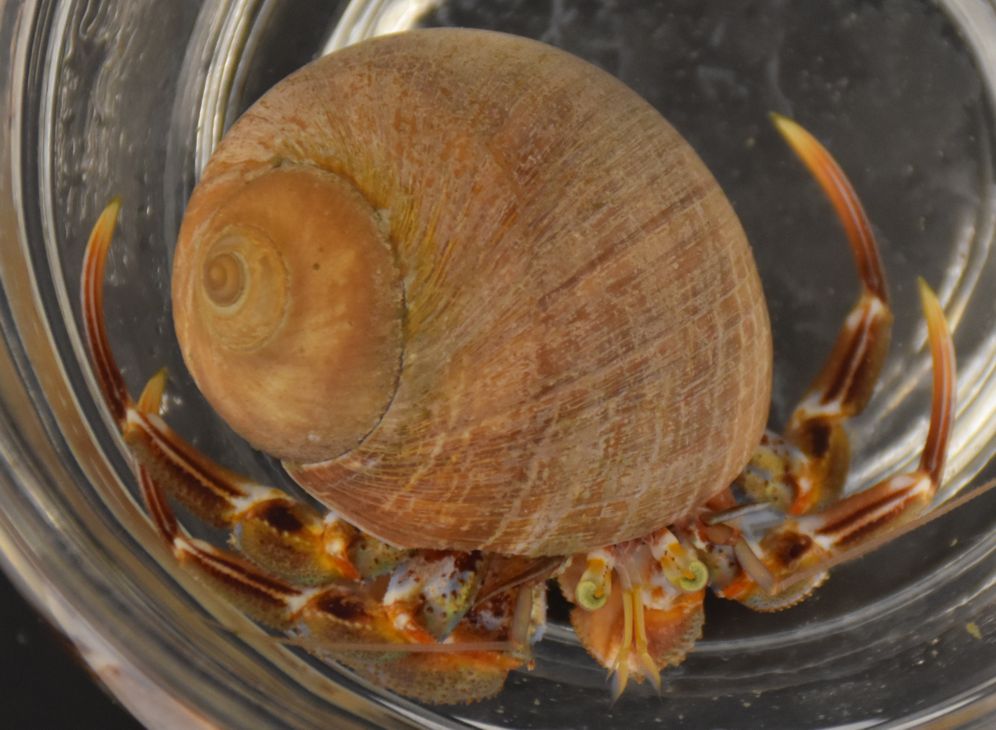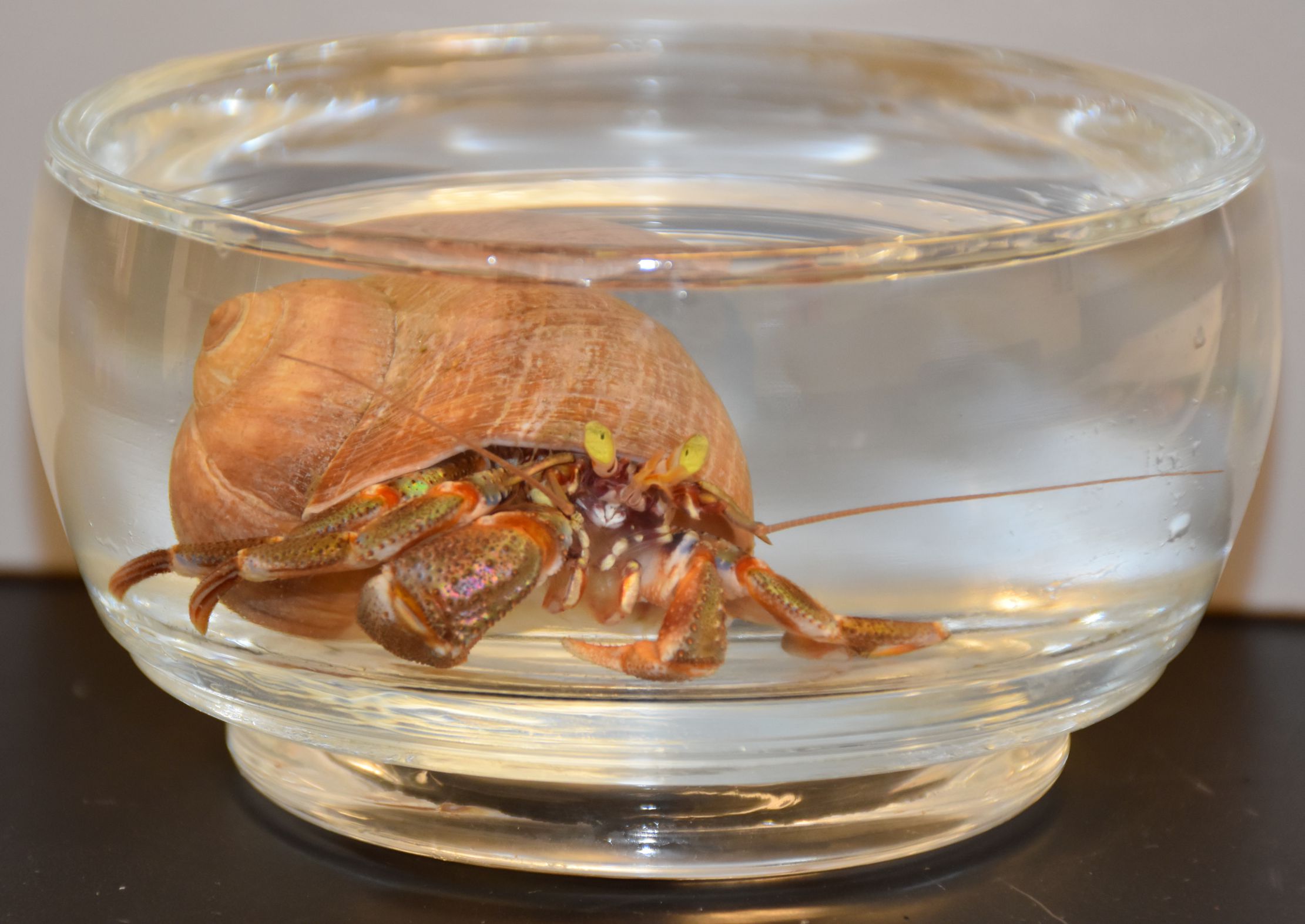Description: As is characteristic of genus Pagurus, the right cheliped is larger than the left and the outer maxillipeds are widely separated at the base. As with most local hermit crabs, this species has a carapace which is smooth and only part of it (the shield, which is pink and maroon) is calcified. The bases of the eyescales are not covered under the front of the carapace when viewed from above. It has a coiled abdomen and typically lives in snail shells (this species favors moon snail shells especially strongly). The carpus of the right cheliped is longer than wide and is not strongly flattened. The dorsal side of the propodus of the left cheliped is flattened, however. This is one of the few local species for which Kozloff's key specifies that the dactyls of the walking legs (pereopods 2 and 3) is twisted in relation to the propodus, and has two reddish-brown stripes (photo). The carpus, propodus, and dactyl of these legs are serrated along the dorsal margins, and the dorsal sides of the dactyls of these legs have several longtitudinal rows of spines with shallow grooves between them but do not have a singly, well-marked longitudinal groove. The propodus and dactyl of the chelipeds have nearly as many spines and tubercles on the ventral side as on the dorsal side (Hart says the propodus has small spines or sharp granules dorsally and stronger spines laterally and ventrally). The merus and carpus of the chelipeds have an opalescent sheen. The eyes are a distinctive yellowish-green. The flagellum of the antenna is pinkish brown. Length to 5 cm, carapace shield length to 2.77 cm in males.
How to Distinguish from Similar Species:P. armatus is similar in having curved dactyls and favoring moon snail shells but has black eyes instead of yellow-green and does not have the opalescent sheen on the chelipeds.
Geographical Range: Pribilof Islands, Alaska to southern California
Depth Range: Low intertidal to 388 m
Habitat: Sandy bottoms.
Biology/Natural History:
Often
occupies moon
snail shells, as does this one.
| Return to: | |||
| Main Page | Alphabetic Index | Systematic Index | Glossary |
References:
Dichotomous Keys:Carlton, 2007
Hart, 1982
Kozloff, 1987, 1996
General References:
Harbo,
2011
Lamb
and Hanby, 2005
Scientific Articles:
Web sites:
General Notes and Observations: Locations, abundances, unusual behaviors:

This view from above shows the distinctive yellow-green eyes and the
twisted, curved dactyls
on the walking legs. Note also the pinkish-brown flagellum
of the second antennae.
Authors and Editors of
Page:
Dave Cowles (2015): Created original page
CSS coding for page developed by Jonathan Cowles (2007)
Salish Sea Invertebrates web site provided courtesy of Walla
Walla University
